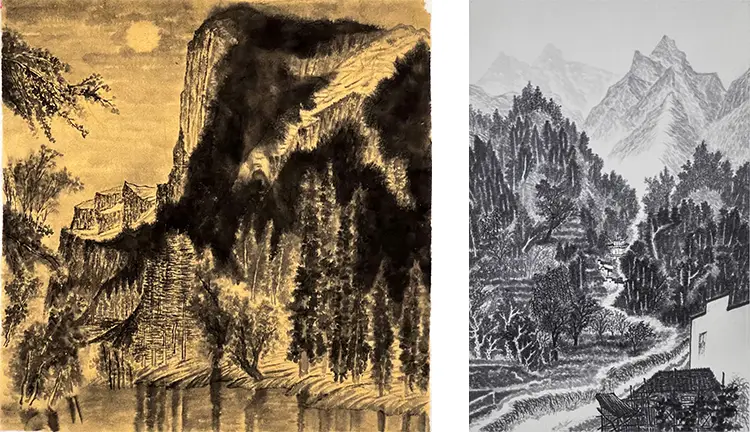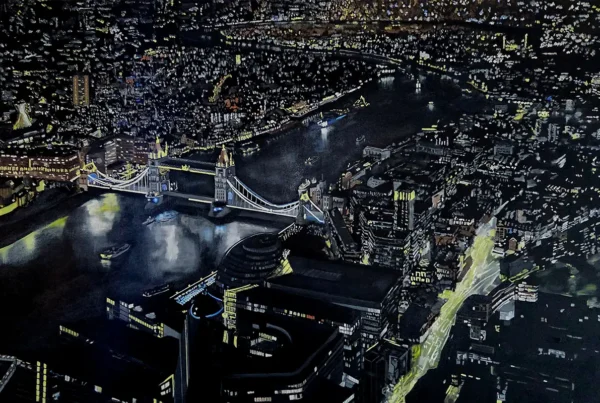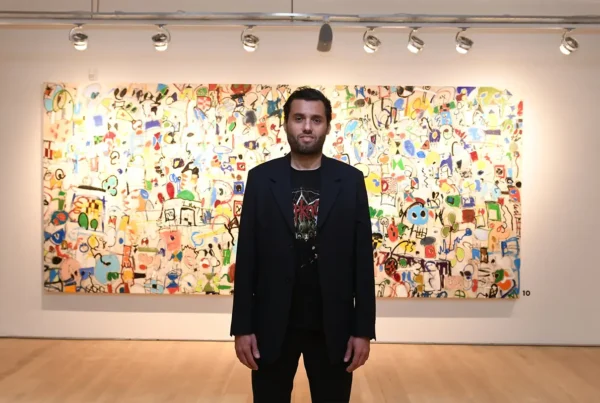“I seek to integrate this cultural heritage with contemporary perspectives.”
Where Spirit Meets Brushstroke
From ancient traditions to urban galleries, Mengmeng Yu (Rico Yu)’s work bridges centuries of visual language. Born in China and now based in New York, he brings the profound legacy of classical Chinese painting into dialogue with today’s global art currents. His approach is steeped in the ink traditions of his homeland, yet reimagined through a contemporary lens that speaks to cultural memory, environmental consciousness, and spiritual presence. Yu’s practice explores more than aesthetics—it interrogates identity, place, and the unseen dialogue between the past and present.
Growing up immersed in traditional Chinese techniques, Yu began his artistic journey with a brush in hand and centuries of philosophy at his fingertips. His early training in classical ink painting instilled in him a respect for precision and restraint, while nurturing a deep emotional connection to nature. Over time, his curiosity expanded beyond historical form. He began asking how ancient visual philosophies could communicate modern ideas, particularly in a world shaped by digital interaction, ecological concern, and cultural hybridity. This question continues to propel his artistic evolution.
Yu’s current practice is a meditation on connection—between the human spirit and the landscape, between memory and movement, between the internal and external world. The serenity in his work belies the complexity of his process, one that requires both technical discipline and emotional vulnerability. His landscapes do not merely represent terrain; they evoke a kind of spiritual geography, where mist and mountain mirror the psyche. This fusion of classical aesthetics with contemporary sensibility is not just stylistic—it is ideological, rooted in a belief that the wisdom of tradition has urgent relevance today.
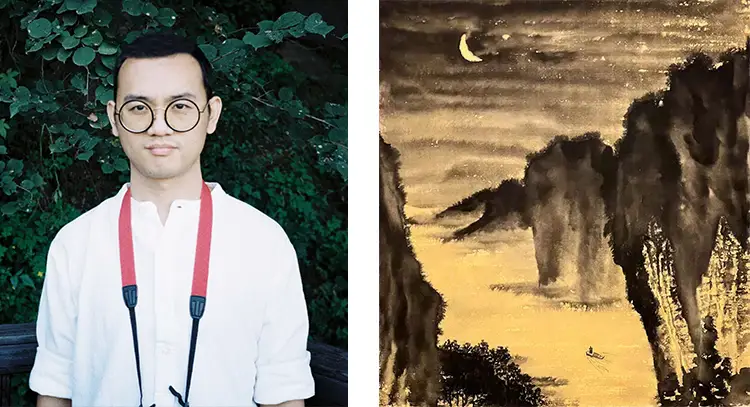
Mengmeng Yu (Rico Yu): Sacred Mountains and Silent Dialogues
Within Mengmeng Yu (Rico Yu)’s artistic journey, a single piece stands as a profound touchstone: a painting from his “Snow Mountain” series. Inspired by the glaciers of Western China, this work carries emotional and symbolic weight. These mountains, remote and sacred, offered him a subject that stretched beyond visual beauty. They represented a connection to ancestral traditions, as well as a step into terrains that historical painters could only imagine. By capturing these icy peaks in ink, Yu opened a portal between temporal planes—painting not just a place, but an experience of timelessness and reverence.
The emotional resonance of these works is amplified by their method of creation. Yu’s approach to these landscapes is informed by field research and personal pilgrimage, but ultimately distilled through ink and rice paper in his New York studio. Each stroke channels the memory of the journey, filtered through meditation and inner reflection. The resulting images shimmer with restraint, conveying both the magnitude of the natural world and the humility of the observer. Here, ink becomes more than medium—it is a conduit for awe, absence, and the echo of footsteps in ancient snow.
What makes this series particularly significant is its philosophical layering. The mountains are not simply aesthetic subjects; they function as meditative mirrors. In painting them, Yu confronts the idea of permanence and impermanence, presence and distance. The glaciers—majestic yet vulnerable to climate change—are metaphors for cultural fragility and ecological urgency. Through this series, Yu reminds the viewer that to look at a landscape is also to listen, to feel, and to reckon with what may soon be lost.
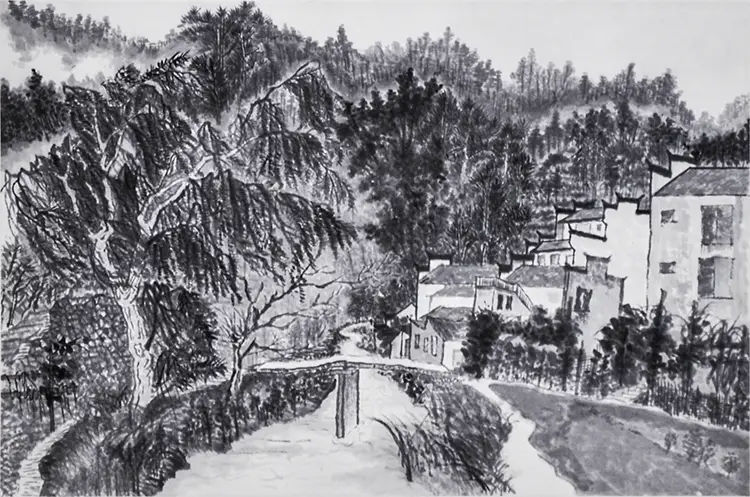
Brushwork and Breath: The Making of a Studio Sanctuary
For Mengmeng Yu (Rico Yu), the workspace is not just a setting for production—it is a sacred container for focus, introspection, and flow. His studio, suffused with natural light, becomes a quiet refuge where creative energy can fully surface. The selection of materials is essential: fine rice paper, traditional ink stones, and brushes that respond to his hand like extensions of his thought. Yet the atmosphere matters just as much. He cultivates silence, allowing each movement to arise from a meditative state. Before touching brush to paper, Yu often begins with stillness, aligning his breath with the emotional landscape he wishes to portray.
This connection between inner state and artistic output is integral to his practice. Distractions are not merely nuisances; they are barriers to the kind of authenticity he seeks in his work. To overcome them, he turns to simple rituals—quiet meditation, breathing exercises, and the intentional preparation of tools. These practices help him return to what he calls the emotional energy of the piece, allowing the ink to flow with clarity and purpose. In his hands, every line is a gesture of attention, every wash of grey an echo of feeling.
The harmony within his studio space is echoed in the visual harmony of his compositions. Even the unpredictable nature of ink, which can bleed, fade, or deepen unexpectedly, is embraced as part of the process. This unpredictability allows for moments of revelation. A sudden shift in tone, a bloom of ink on paper—these are not mistakes, but invitations to respond. The studio, in Yu’s philosophy, is not a place to control but to commune. It is where dialogue happens between artist and material, silence and sound, history and the present.
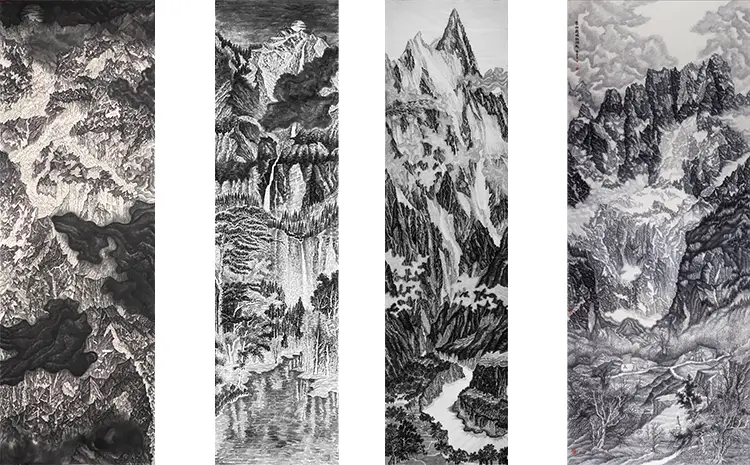
Mengmeng Yu (Rico Yu): Time, Identity, and Expanding the Canvas
Beyond the solitary brushstroke, Mengmeng Yu (Rico Yu) envisions a future where ancient techniques can embrace the digital and immersive. One of his most ambitious dreams is to realize a large-scale installation that fuses traditional ink painting with projection mapping. In this imagined environment, brushstrokes would ripple across vast surfaces, not confined to paper but alive in motion and light. Viewers could walk within landscapes once reserved for contemplation, stepping into spaces that blur the line between painting and place. This vision reflects his desire to make shanshui—a tradition rooted in inward reflection—into an outward, shared experience.
Such a project would not be a departure from his values, but an extension of them. It continues his exploration of how classical aesthetics can intersect with global technology and contemporary storytelling. The immersive format would allow new audiences to encounter the meditative power of ink in unexpected ways. By scaling up his work into architectural or digital spaces, Yu aims to create environments where viewers don’t just observe, but participate—where landscape becomes atmosphere, and brushwork becomes breath. This blend of old and new is central to his ethos as an artist navigating both heritage and innovation.
Yu’s artistic influences reflect this bridging of time and form. He draws deeply from the philosophical insights and compositional techniques of Fan Kuan and Dong Qichang, Chinese masters whose landscapes offered not only visual poetry but also metaphysical reflection. At the same time, Yu finds inspiration in contemporary abstract artists and landscape photographers who use negative space and spatial tension to evoke emotion. These layered influences converge in his own unique language—an art form where silence speaks, and the ancient pulse of ink flows into the future.
